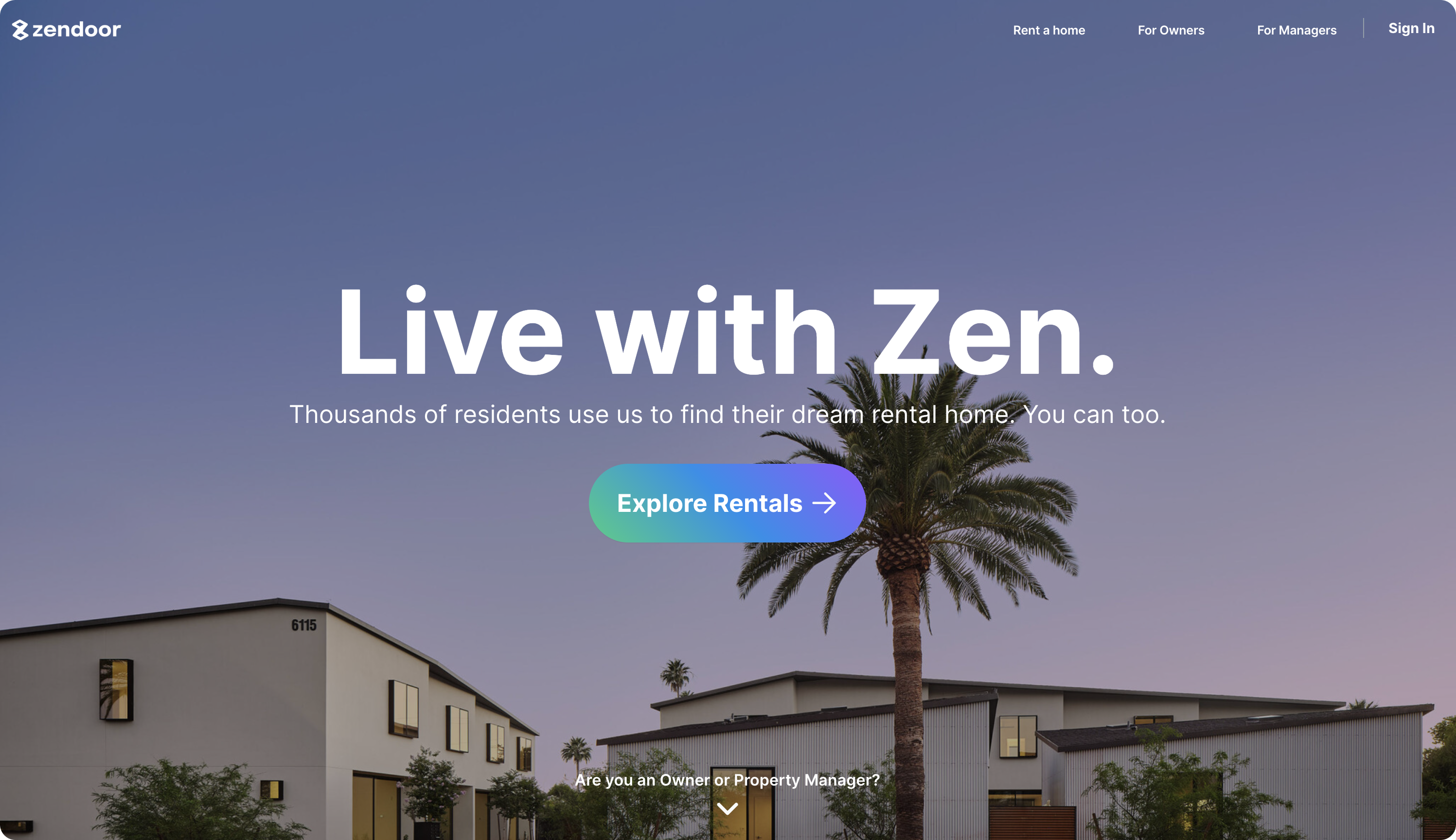
Zendoor is a platform that supports property managers with all the tools they need to run their independent business, providing administrative support, business development, and training services.
Their marketplace also serves property owners and renters. Owners can browse qualified property managers and contact them through the platform, while renters can search and apply for rental listings in their area and connect directly with property managers for follow-up.
Building a better user experience for property managers and renters
Zendoor’s platform consists of multiple types of users—property managers, owners, and renters—so the user experience needs to serve each of their needs.
When Zendoor launched in 2021, their team realized notifications would be a key driver of engagement on the platform and the primary way for users to communicate with one another. They also found that though Zendoor acted as the conduit for this communication, the different user segments of their platform relied on different notification channels to complete their jobs.
Property managers, who used Zendoor at work, preferred email notifications so they could triage Zendoor tasks alongside the rest of their responsibilities. Renters, who came to Zendoor as a consumer service, preferred responding to Zendoor tasks sent via text message (SMS) notifications.
“We’re an app that users return to when they need to complete a task—like a renter uses Zendoor to pay rent, notify a property manager of a repair, or update their payment information,” shared Shivam Sadachar, Head of Engineering. “We knew notifications would be a great way to update our users about important events where they need to respond on the platform.”
As Zendoor grew, they knew they needed a scalable notification service that could support tens of thousands of notifications a day, while also giving them the flexibility to roll out cross-channel support and new notification types as needed.
Building this functionality in-house would take months of upfront engineering effort, plus the ongoing maintenance required to scale the system and any engineering time required to make adjustments.
Finding a scalable solution for notifications
The Zendoor team evaluated their options: build in-house or use a hosted notification engine such as Knock.
Zendoor ultimately chose Knock to power all of their notifications. Their decision came down to:
- Channel support. Instead of building integrations for each channel (email, SMS, push, and in-app notifications), they wanted a notification system that could support all of this functionality out-of-the-box.
- Centralization. They wanted to be able to see one centralized view of all of their notifications without having to dig into separate logs for each channel.
- Batching. Early on, some users could receive up to hundreds of in-app notifications a day on the platform. The Zendoor team wanted to batch notifications to reduce notification overload for users and drive higher engagement.
- Engineering time. Building and maintaining a notification system in-house would consume engineering resources and take focus away from other high-priority tasks.
They found that Knock’s scalable infrastructure could deliver and store a high volume of notifications, meeting their needs now and as the Zendoor platform continues to grow.
Impact: A powerful notification system that supports a growing platform
The Zendoor team sent their first notifications through Knock within a day. Today, Zendoor uses Knock to support over 80 notification workflows and send hundreds of thousands of notifications per month.

Zendoor manages over 80 notification workflows using the Knock dashboard.
Head of Engineering at Zendoor, Shivam Sadachar, attributed their quick onboarding to Knock’s ease of use: “Knock had so many features out-of-the-box that we didn’t have to build internally, from template and layout design to workflow orchestration to in-app notification components,” shared Shivam. “It was super simple to get up and running.”
“After writing the initial code to integrate with Knock, creating new notifications and sending them is really easy to do,” said Ani Ravi, software engineer. “I like building abstractions and using tools that just work after you do something with them the first time, and Knock helps us get there with notification sending and delivery.”
Improved visibility into all notification channels
As the team at Zendoor continued to use Knock, they saw additional benefits for their team and their users.
Zendoor’s team uses the dashboard in Knock to get a birds-eye view of all of their notification workflows. They can easily understand the scope of all of their notifications types across channels, diagnose issues, and make changes as needed.
“We can see all of the push notifications and emails that we’ve sent in one place, which is a huge value-add. There’s no way we would ever build our own internal dashboard because of the amount of resources it would take.” —Shivam Sadachar, Head of Engineering.
With Knock’s workflow builder, the Zendoor team can configure where and how notifications appear in different channels—in this case, within an email service to a property manager or a text to a renter. Knock’s template editor means they can immediately see how a notification will look and adjust quickly with drag-and-drop components.
If an engineer wants to see how a notification appears on iOS vs. Android, they can click into a workflow and see a preview to make sure that everything is displaying as intended.
“The most useful features for our team have been workflows, templating, and setting up different environments,” said Ani Ravi, software engineer. “Due to changes in our needs, it's been nice to be able to fill in certain variables at runtime instead of defining them statically”
Added flexibility for scalability and growth
As Zendoor scales, flexibility will continue to be a focus as they adapt to the needs of their customers. With Knock, the Zendoor team can easily integrate with all of their downstream channels, such as email, push, and SMS services. This means that they can easily surface notifications based on users’ preferences.
Let’s say the stove broke in a renter’s apartment. The renter could mark this problem in Zendoor and the property manager would receive a notification in their email in addition to their in-app feed. The notification would immediately take them to a ticket page so they can take action on the problem.
Because of Knock’s pre-built components in its user interface, Zendoor can easily bring different notification types into their platform to test engagement without needing time from engineering.
Looking to the future, this flexibility allows the Zendoor team to adapt and improve their product to fit their users’ needs. An example of this is working with partners on property listings, where Zendoor plans to use Knock to white-label notifications so their messaging is on-brand for each of the different partners they’re working with.
Faster time-to-value with less engineering time
With the cross-channel delivery logic and preference system Zendoor uses for its notifications, building a custom notification system in-house would have required a dedicated team of engineers.
With Knock, engineers can focus on other areas of the platform and work on important tasks that further improve the user experience.
“Engineers have to think about notifications less so they are freed up to think more about our core competency, which is helping property managers be more productive.” —Angel Herrera, Co-founder and CEO at Zendoor.
With Knock, Zendoor can continue to build a first-class customer experience on their platform, with notifications at its center.